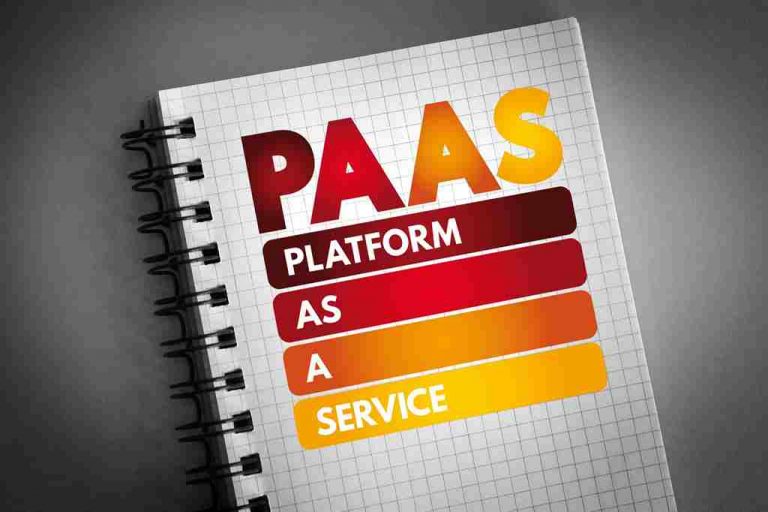What is embedded finance? 4 ways it will change fintech
The opportunity for financial services to expand into previously non-financial areas is unprecedented—and still in the very early stages. This financial transformation will continue to gain strength across nearly every sector as more companies adopt embedded finance and as consumers become more comfortable with these services. By embedding financial services into established buyer journeys, many new revenue streams have already been established. Additional revenue streams are likely to continue popping up as companies find new and creative ways to add value through embedded finance. With more companies acting as financial companies, financial providers will need to become more accustomed to sharing customers with non-financial companies for services only they used to provide. This will increase competition for traditional finance companies and may result in better products and better customer service.

Shoppers who are in this situation might well come back and complete the transaction later – or they may not. According to Baymard Institute, 18% of consumers cite ‘a long and complicated checkout process’ as the main reason for cart abandonment. Let’s say that you’re on your lunch break and browsing for a new pair of sneakers. After comparing several brands, embedded payments trends models, and sizing charts, you finally come upon the perfect pair. You head to the checkout – only to be confronted with a bunch of fields to fill out for your chosen payment method. In an era where digital experiences are increasingly omnichannel and interconnected, consumers don’t differentiate between what is controlled by one entity versus another.
Embedded Finance: What It Is And How To Get It Right
Embedding financial services helps platforms drive superior economics, increasing customer lifetime value. With minimal incremental customer acquisition costs, platforms can raise average revenues per user, while keeping customers longer. The service gets more entrenched in customers’ respective business processes and adopted by the end users. This creates a virtuous cycle where the “better together” value proposition accelerates customer acquisition, while the additional revenue can be reinvested in the business to spur further growth. Embedded finance began as technology to merge software and commerce business models. Today, the use cases continue to expand, from Shopify’s embedded banking offering, Shopify Balance, to a myriad of buy now, pay later (BNPL) options at online checkout.
- Rolled out an embedded-payment solution for businesses within Microsoft Dynamics 365, a cloud-based business-applications platform.
- Embedded insurance allows users to purchase insurance on online purchases at the point of sale.
- This includes the rise of niche neobanks, like tribal neobanks, and neobanking for employees, which allows businesses to offer banking to their employees to increase retention.
- They’ve developed customized offerings that cater to the unique needs of merchants in growing industries such as health and wellness, travel and hospitality, or transportation.
Then, they partner with non-financial companies (their customers) to get them up and running with these embedded finance products and services in weeks or months, rather than the years it would take to build. They’re also a much cheaper option than buying an entire financial services company. From the financial institution POV, embedded payments are a true innovation enabler. When I talk to the market about potential use cases for real-time payments, I often find myself talking about the art of the possible. What could faster money movement enable, not so much focusing on the money movement itself, but what experience one could build upon the money movement functionality? Look at where you can extend beyond the banking products of the 20th century that were limited by analog-digital money movement functionality (e.g., batch-based or paper based products).
Platforms choose their partners
Embedded finance speeds up the processing of financial decisions for companies, Chang said. Businesses also learn more about their customer’s spending habits and receive payments quicker than traditional invoicing. For embedded-finance providers, success demands clear differentiation in the form of product breadth or depth, or the provision of ancillary program management services. Extend, the digital payment infrastructure for financial institutions to enable modern card experiences. While it’s one thing to test the waters with different strategies, it’s equally important to assess the partnership at stake. Choosing solutions based on the feature set today doesn’t always guarantee long-term success.

This speed to market has enabled NUMARQE to respond quickly to the financial needs of its customers. The difference in customer experience between B2B and business-to-consumer (B2C) is vast. The customer experience has diverged, with B2C becoming easier but business payments seemingly as difficult as ever.
Embedded Payments Are Here: How To Prepare
My advice would be to run small pilots with the solution or service before fully embedding it into your processes or committing the resources. Once your team feels confident in its value, you can begin to scale while simultaneously iterating on your processes to work out the kinks and ensure success. Rather than wrestling a physical card out of their wallet or purse, this capability allows customers to make secure and convenient transactions with their smartphones or wearable devices. Weavr’s Plug-and-Play Finance gives your business the ability to design and launch products at short notice, which is essential in today’s fast- paced world. That’s not the only benefit, Weavr is the fastest and most cost-effective option for any business wishing to embed finance and validate its impact.

Other common forms of embedded finance include sales financing at appliance retailers and auto loans at dealerships. Arrangements like these operate as a channel for the banks behind them to reach end customers. Embedded https://www.globalcloudteam.com/ finance broadly refers to the embedding of financial tools in non-financial services. When a website or app other than that of your bank allows you to see your bank account balance, that’s an example of embedded banking.
Enhanced User Experience
However, when it comes to further streamlining internal, back-end payment processes, why shouldn’t a finance manager have the same level of efficiency in their business tools that they do in their consumer lives? Now, that might be a bit of an exaggeration considering the complexity of managing corporate finances compared to your personal spending—but there’s certainly room for improvement. The concept of Uber is so familiar now that maybe we forgot how revolutionary the idea of hailing and paying for a cab from your phone was at the start. Without the need to find a cab on the street or plan ahead for a car service before fumbling for your wallet while the cars behind you honked to get around you, the customer experience was reimagined in a big way. The monumental shift to a seamless cab-hailing experience set a new precedent for travelers, transforming the entire industry. The regional bank failures did not impact Gusto’s payroll operations this spring, London noted.
In sum, it’s going to be increasingly difficult to separate embedded payments from the growing democratization of the payment experience. Just as embedded payments are quickly gaining traction with merchants, they are also gaining ground in business-to-business payments as B2B buyers come to expect the same type of digital buying and payment experiences retail merchants offer. As a result, B2B sellers are facing increasing competition to win business from B2B buyers that prefer to purchase digitally. But requiring consumers to store a card on file is not the only way merchants and businesses can enable embedded payments.
Company Announcements
It wasn’t until eBay started working with PayPal that the site started enabling online payments. Granville sees this moment as an inflection point for digital payments, with winners and losers. In this hotly contested market, 90% of today’s revenue pool could migrate to software vendors, major technology firms, and other contenders. As this market expands, success will hinge on rethinking the risk and brand calculus, embracing different integration models, and understanding where to play. Maybe your platform has hundreds of users today, but the plan is to expand your business, and you want to grow users by the thousands or by the millions.
As a result, there are many different types of embedded finance products and services. The most common examples of embedded finance include fintech, banking, payments, credit cards, lending, investing, and insurance. Among embedded-finance distributors and their end customers, demand is already maturing for a range of deposit, payment, issuing, and lending products (Exhibit 1). In addition to these traditional financial products, novel use cases are emerging.
Embedded Investing
Although growth looks strong for enablers overall, the supply of new enablers could far outstrip demand. Leveraging these insights allows companies to fine-tune marketing strategies and boost conversion rates. Between 2020 and 2021, the coronavirus crisis caused businesses to rethink and accelerate their digitization strategies unlike ever before. Digitization projects planned for years in advance were completed within months.
